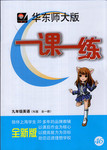题目内容
She _____ some old photographs in a drawer.
A. came along B. came about C. came round D. came across

 华东师大版一课一练系列答案
华东师大版一课一练系列答案 孟建平名校考卷系列答案
孟建平名校考卷系列答案There are a lot of differences in life in the US that you can only learn by living here. However, we will try to introduce you to some of the more important cultural differences.
Personal Space
When two people are talking to each other, they tend to stand a distance apart. Each person has an invisible boundary (界限) around their body into which other people may not come.
Interestingly,the average personal distance varies from culture to culture. Americans tend to require more personal space than in other cultures. So if you try to get too close to an American during your conversation, he or she will feel that you are “in their face” and will try to back away.
Try to avoid physical contact while you are speaking, since this may also lead to discomfort.
Tipping(小费)
Restaurants do not include a service charge in the bill, so you should tip the waiter 15% of the total bill. If service is slow or particular bad, some Americans will tip only 10%. If service is particularly good, it is appropriate to tip 20%. If service is so bad that you will never eat in the restaurant again, leave two cents. It tells the waiter that you haven’t forgotten to leave a tip. Tipping is only appropriate in restaurants which offer table service. You do not tip the cashier in a fast food restaurant.
Gestures
To wave goodbye or hello to someone, raise your hand and wave it from side to side, not front to back. Wave the whole hand, not just the fingers. Waving the hand front to back or the fingers up and down means “no”, “stop”, or “go away’. Holding your hand up with the palm facing forward but no movement means “stop”.
If you want to point at an object, extend the index finger and use it to point at the object. It is not polite to point at people.
Although showing your fist with the thumb up or your open hand with the tips of the thumb and index finger together forming an “O” means “OK”, these are stereotypes (老套). Americans understand these gestures, but they are mainly used by actors in movies, not in real life.
【小题1】 If an American to whom you are speaking backs away a little, you’d better __________.
| A.not try to close the gap | B.stop talking with him or her |
| C.back away too | D.ask him or her what happened |
| A.The tip always ranges from 10% to 20% of the total bill. |
| B.You needn’t leave a tip if you will never eat in the restaurant. |
| C.It’s unnecessary to tip the waiter in a restaurant. |
| D.Tipping is not necessary in fast food restaurants. |
A B. C. D.
.




【小题4】We can learn from the passage that in the US ___________________.
| A.it’s natural to touch each other in a conversation. |
| B.it’s polite to leave a tip though the service is bad. |
| C.there is only one gesture meaning “stop”. |
| D.Americans use the same gesture to point at people and objects. |